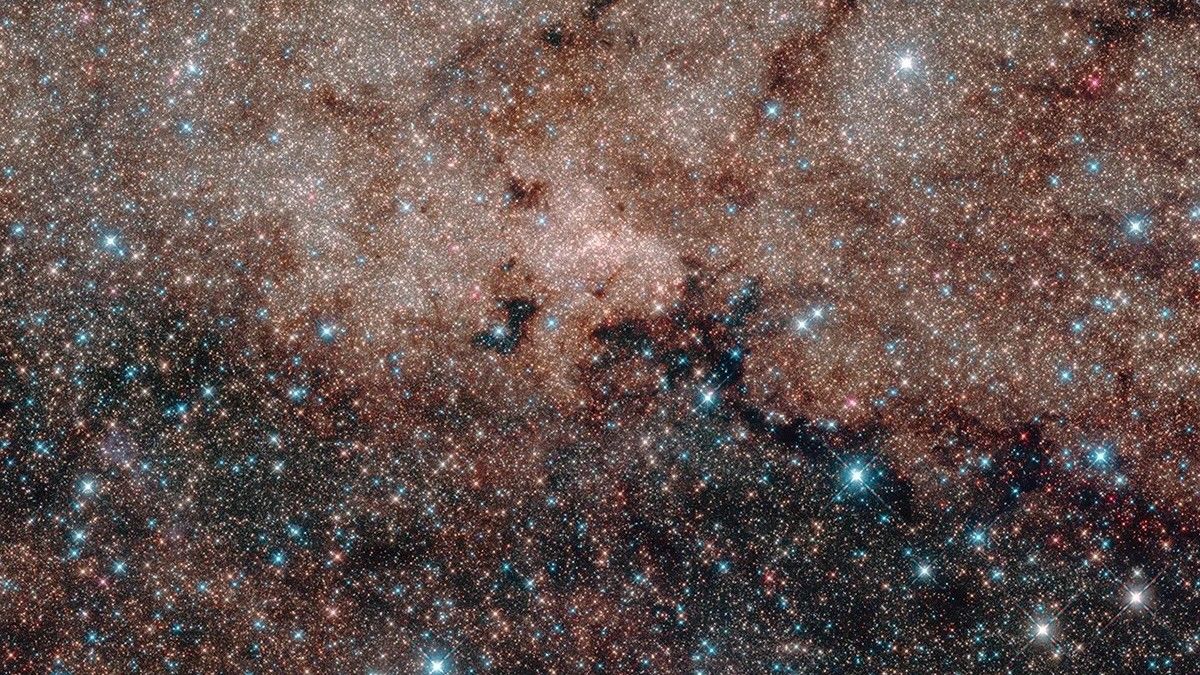Most of the atoms in your body likely spent millions of years circling the Milky Way on a cosmic “conveyor belt” before returning to our galaxy prior to the solar system’s creation, a new study suggests.
Most elements in the universe, except for hydrogen and helium (and a few other weird exceptions), were forged by stars, either through nuclear fusion deep within their cores or during gigantic stellar explosions, known as supernovas. These explosions also disperse the newly forged materials into interstellar space. The matter then forms giant clouds that eventually condense into new stars surrounded by other objects, such as planets, moons, asteroids, comets — and in Earth’s case, people.
For decades, scientists assumed that matter expelled by exploding stars slowly drifted through interstellar space before reforming into new star systems. However, in 2011, scientists discovered that some atoms, including oxygen, iron and other heavier elements, can be expelled from their host galaxy by supernovae and get caught up in giant cosmic currents, known as the circumgalactic medium. These atoms eventually fall back into their original galaxy, including the Milky Way, and get turned into new stuff.
In a new study, published Dec. 27, 2024 in the journal The Astrophysical Journal Letters, researchers studying the circumstellar medium around distant galaxies have shown for the first time that carbon atoms can also be recycled via these cosmic currents. Scientists previously assumed this was unlikely, believing that carbon atoms are too light to be expelled from the galaxy. The team also showed that carbon is one of the most abundant elements within these extragalactic structures.
Related: How many atoms are in the observable universe?
This means that “the same carbon in our bodies most likely spent a significant amount of time outside of the galaxy,” study co-author Jessica Werk, an astrophysicist at the University of Washington, said in a statement. Given that other abundant atoms within human bodies, such as oxygen and iron, are also known to travel in the circumstellar medium, it is likely that a majority of the atoms in most people’s bodies have spent time outside the Milky Way.
The researchers made the discovery using data from the Hubble telescope’s Cosmic Origins Spectrograph, which measures how light from distant quasars (brightly glowing objects powered by active black holes) is affected as it passes through the circumstellar mediums of different star-forming galaxies. This also revealed that, in some cases, carbon can be found up to 400,000 light-years outside its host galaxy — a distance around four times wider than the Milky Way.
Recycling star stuff
The circumstellar medium is a relatively new concept in astrophysics, and the new study confirms that it plays a vital role in how galaxies recycle their star-forged materials.
“Think of the circumgalactic medium as a giant train station: It is constantly pushing material out and pulling it back in,” study co-author Samantha Garza, a doctoral candidate at the University of Washington, said in the statement.
Understanding which elements can be recycled by the circumstellar medium is important because it will help researchers work out exactly how matter gets distributed and reformed throughout the universe. The cosmic currents also likely enable galaxies to continually form new stars, meaning they play a key role in galactic evolution.
“If you can keep the cycle going — pushing material out and pulling it back in — then theoretically you have enough fuel to keep star formation going,” Garza said. Therefore, learning how these currents eventually slow down and fizzle out will be a key tool in understanding how galaxies eventually die, she added.
